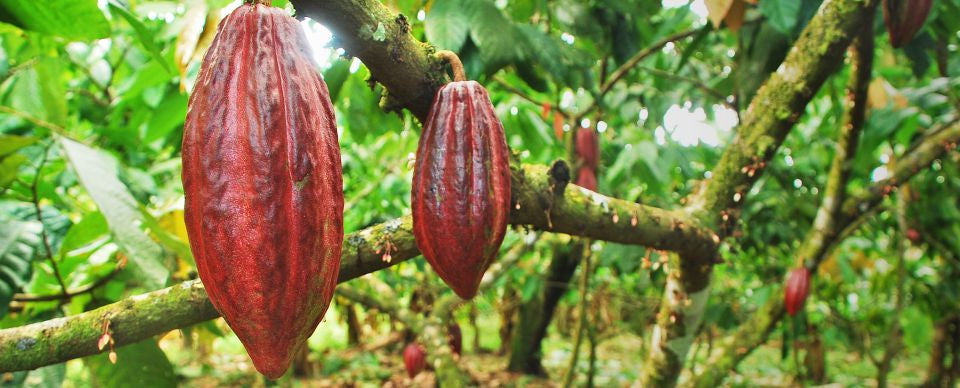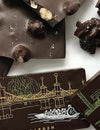
 Photo Source: www.rainforest-alliance.org/
Photo Source: www.rainforest-alliance.org/
Two hundred years ago, Carolus Linnaeus, the great Swedish founder of modern botany, gave the cacao tree it's scientific name Theobroma cacao, or "food of the gods."
Follow the equator and you'll find cacao...
The cacao tree is suited to grow perfectly within the latitudes of 20 degrees north and 20 degrees south of the equator. Cacao trees grow under the great canopy of towering shade trees. These graceful trees bear fruit that looks like footballs and grows straight out of the trunk. The cacao pods thrive in the tropical heat around the equator, and produce an array of colors and shapes. The pods can range from bright green to pale yellow, dark purple to burnt orange or Crimson.
An evergreen without a distinct harvest season, the cacao tree puts forth flowers continuously, but only about 3 out of a 1000 get pollinated and progress to fruit. They are pollinated by midges (nat-like bugs) that love the rainforest. It takes 5-8 months for a bud to progress to a ripe fruit.
It was said the first two types of cacao originated in South America. Criollo from northern South America and forestero apparently from the Amazon basin.
Criollo was considered finer with a mellow and complex taste. Although forestero didn't have the fine flavor of criollo, it had other advantages. They produced many pods with a large bean count and appeared very hardy.
The third, Trinitario, was a hybrid named when trees from the island of Trinidad were crossed with trees from the mainland Venezuela. They were thought to be hardier than criollo and better tasting then forestero.
There are now many more hybrids out there, many of which were developed to make cacao cheap and abundant, but leaving it flavorless. Think about our modern tomato, that is bred for uniform ripening and firmness, but is lacking in flavor. Fortunately, today there are hybrids being engineered to have abundant offspring, disease free and more flavor.
Top 10 cacao producing countries:
- Côte d'Ivoire
- Ghana
- Indonesia
- Nigeria
- Cameroon
- Brazil
- Equator
- Mexico
- Dominican
- Republic Peru
While many chocolates are made from a blend of beans from different countries and different plantations, some think the finer chocolates are made from beans that have come from a single region (single-origin), or a single plantation (estate-grown). There are many parallels between wine making and chocolate making in this respect. Local soil and environment bring out inherent characteristics, and also the particular styles of drying and fermentation have distinct effects on overall flavor and aroma. The advantage of the single origin approach, is that the individual nuances of a particular bean will register more clearly on the palate.
It's time to taste.
We would like to introduce you to 3 single origin chocolates, so you can taste for yourself the different flavors, some subtle and some robust. Take a bite and let it melt on your tongue!
72% Venezuelan, Single Origin Dark Chocolate
Made from rare Venezuelan cocoa beans, it can be compared to great wines with high tannins and a long lasting finish on the palate. It has flavors of currants and chestnuts with hints of honey and fresh baked bread.
68% Ghana, Single Origin Dark Chocolate
Distinguished by a subtle acidity that allows a note of round chocolate warmth to develop followed by a soft and sweet spiciest. Its character is enhanced by a delicate bitterness.
66% Mexico, Single Estate Dark Chocolate
Powerful notes of cocoa with second hints of dried tropical fruits.

 Photo Source: www.rainforest-alliance.org/
Photo Source: www.rainforest-alliance.org/



